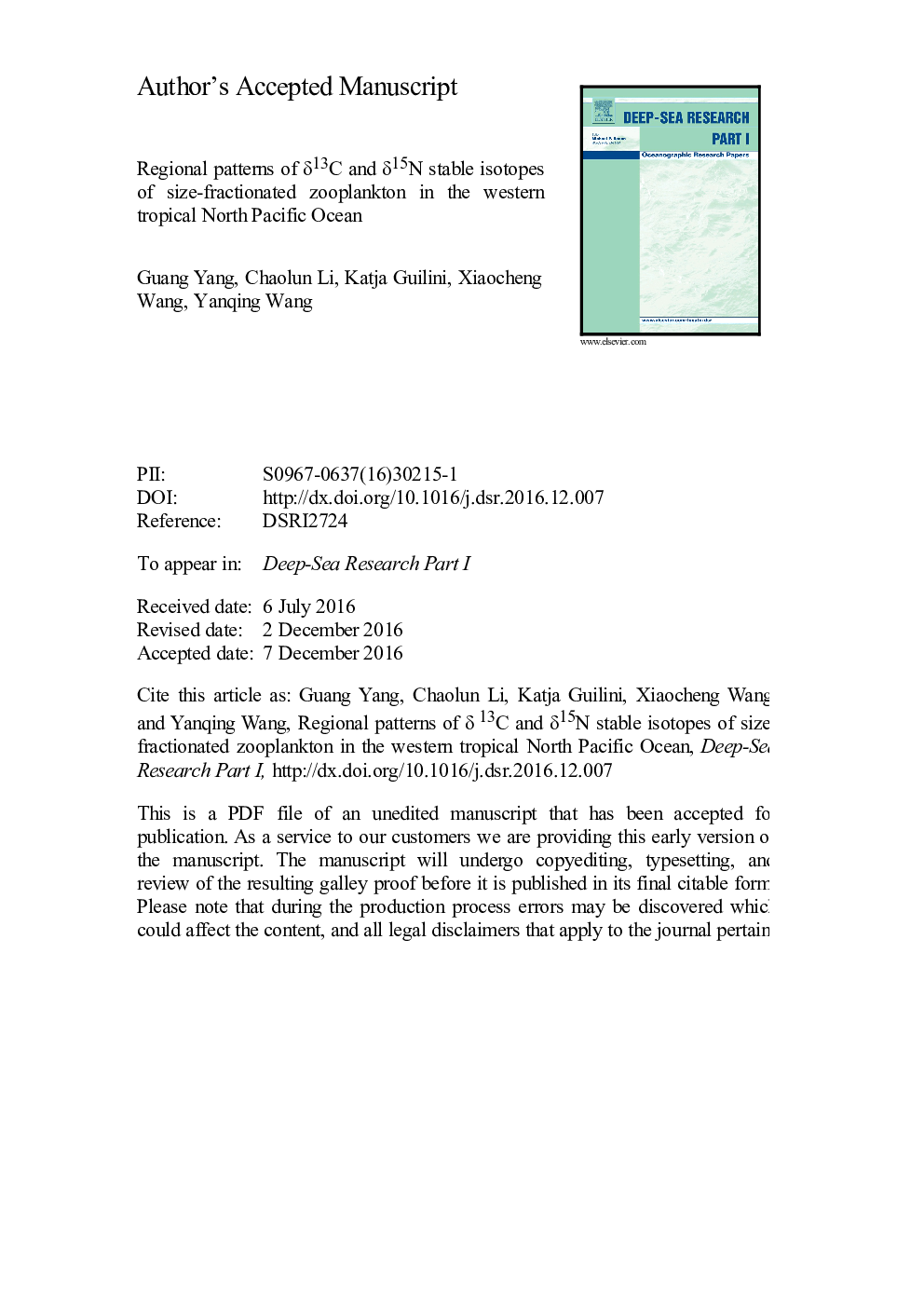| Article ID | Journal | Published Year | Pages | File Type |
|---|---|---|---|---|
| 5764709 | Deep Sea Research Part I: Oceanographic Research Papers | 2017 | 18 Pages |
Abstract
Zooplankton play a prominent role in the biogeochemical cycles of marine ecosystems. Little is known about the trophodynamics of zooplankton in response to geographic patterns in isotopic baselines and physical processes in the western tropical North Pacific. In this study, stable isotope ratios of five size fractions of zooplankton (100 to >2000 µm) from different current regions in the western tropical North Pacific Ocean were analyzed. Both δ13C and δ15N isotopic values increased with zooplankton size class. The largest zooplankton group (>2000 µm), with a diverse composition, showed relatively higher stable isotope signatures, covering a wider range. Regional variations in the zooplankton stable isotope signatures were similar across all size classes, with generally higher values in the North Equatorial Counter Current (NECC) and the North Equatorial Current (NEC) and lower values in the Subtropical Counter Current (STCC). These regional patterns of zooplankton isotope signatures were consistent with the variation of oceanographic features (temperature, salinity, nutrients, chlorophyll a) and were also related to the isotopic baselines of particulate organic matter (POM) in the different current regions. Moreover, the nitrogen-fixing cyanobacteria Trichodesmium spp. may be the main contributor to low δ15N values in the STCC. The results of this study demonstrate the influence of physical processes on the stable isotopic signatures of zooplankton. This baseline information is crucial for future food web studies in the western tropical North Pacific Ocean.
Related Topics
Physical Sciences and Engineering
Earth and Planetary Sciences
Geology
Authors
Guang Yang, Chaolun Li, Katja Guilini, Xiaocheng Wang, Yanqing Wang,
